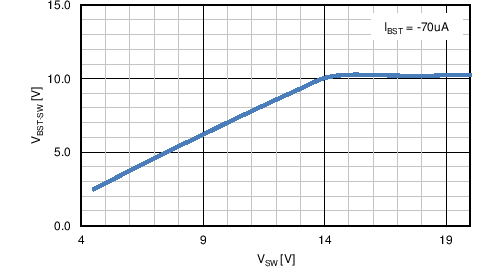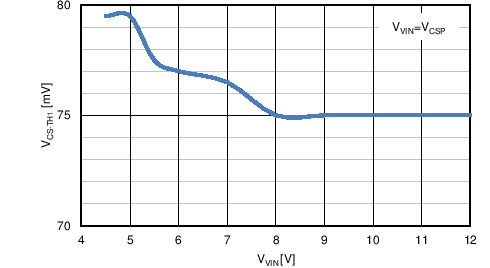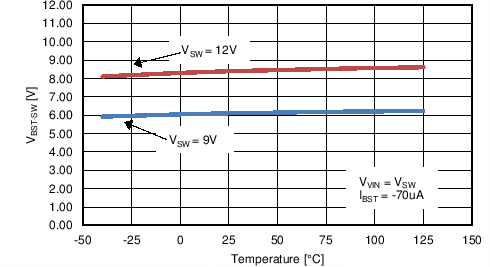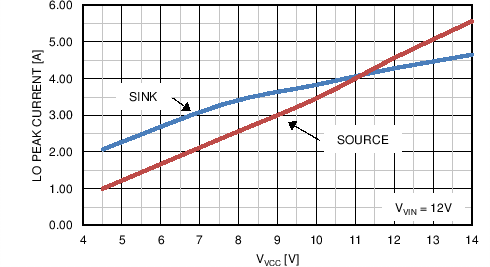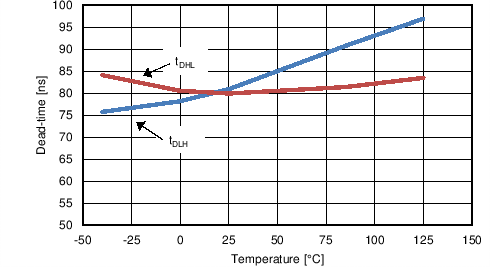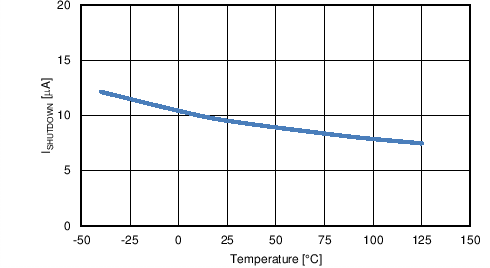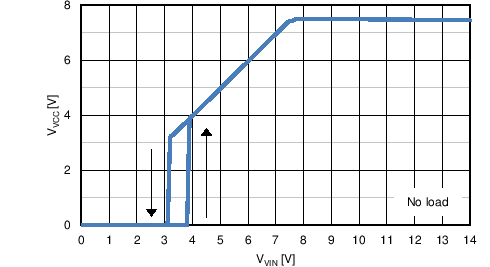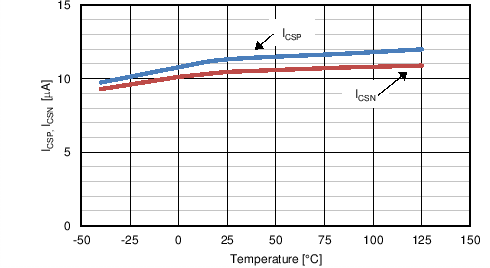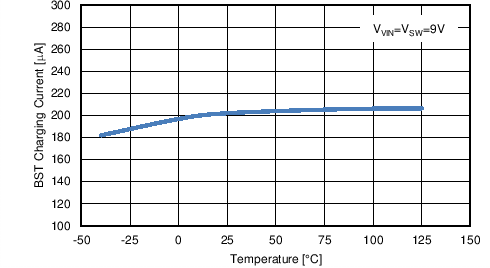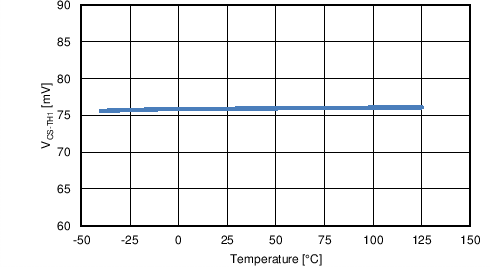SNVS954H February 2013 – June 2017 LM5122
PRODUCTION DATA.
- 1 Features
- 2 Applications
- 3 Description
- 4 Revision History
- 5 Pin Configuration and Functions
- 6 Specifications
-
7 Detailed Description
- 7.1 Overview
- 7.2 Functional Block Diagram
- 7.3
Feature Description
- 7.3.1 Undervoltage Lockout (UVLO)
- 7.3.2 High Voltage VCC Regulator
- 7.3.3 Oscillator
- 7.3.4 Slope Compensation
- 7.3.5 Error Amplifier
- 7.3.6 PWM Comparator
- 7.3.7 Soft-Start
- 7.3.8 HO and LO Drivers
- 7.3.9 Bypass Operation (VOUT = VIN)
- 7.3.10 Cycle-by-Cycle Current Limit
- 7.3.11 Clock Synchronization
- 7.3.12 Maximum Duty Cycle
- 7.3.13 Thermal Protection
- 7.4 Device Functional Modes
-
8 Application and Implementation
- 8.1
Application Information
- 8.1.1 Feedback Compensation
- 8.1.2 Sub-Harmonic Oscillation
- 8.1.3 Interleaved Boost Configuration
- 8.1.4 DCR Sensing
- 8.1.5 Output Overvoltage Protection
- 8.1.6 SEPIC Converter Simplified Schematic
- 8.1.7 Non-Isolated Synchronous Flyback Converter Simplified Schematic
- 8.1.8 Negative to Positive Conversion
- 8.2
Typical Application
- 8.2.1 Design Requirements
- 8.2.2
Detailed Design Procedure
- 8.2.2.1 Custom Design With WEBENCH® Tools
- 8.2.2.2 Timing Resistor RT
- 8.2.2.3 UVLO Divider RUV2, RUV1
- 8.2.2.4 Input Inductor LIN
- 8.2.2.5 Current Sense Resistor RS
- 8.2.2.6 Current Sense Filter RCSFP, RCSFN, CCS
- 8.2.2.7 Slope Compensation Resistor RSLOPE
- 8.2.2.8 Output Capacitor COUT
- 8.2.2.9 Input Capacitor CIN
- 8.2.2.10 VIN Filter RVIN, CVIN
- 8.2.2.11 Bootstrap Capacitor CBST and Boost Diode DBST
- 8.2.2.12 VCC Capacitor CVCC
- 8.2.2.13 Output Voltage Divider RFB1, RFB2
- 8.2.2.14 Soft-Start Capacitor CSS
- 8.2.2.15 Restart Capacitor CRES
- 8.2.2.16 Low-Side Power Switch QL
- 8.2.2.17 High-Side Power Switch QH and Additional Parallel Schottky Diode
- 8.2.2.18 Snubber Components
- 8.2.2.19 Loop Compensation Components CCOMP, RCOMP, CHF
- 8.2.3 Application Curves
- 8.1
Application Information
- 9 Power Supply Recommendations
- 10Layout
- 11Device and Documentation Support
- 12Mechanical, Packaging, and Orderable Information
Package Options
Mechanical Data (Package|Pins)
Thermal pad, mechanical data (Package|Pins)
Orderable Information
6 Specifications
6.1 Absolute Maximum Ratings
Over operating free-air temperature range (unless otherwise noted)(1)| MIN | MAX | UNIT | ||
|---|---|---|---|---|
| Input | VIN, CSP, CSN | –0.3 | 75 | V |
| BST to SW, FB, MODE, UVLO, OPT, VCC(2) | –0.3 | 15 | V | |
| SW | –5 | 105 | V | |
| BST | –0.3 | 115 | V | |
| SS, SLOPE, SYNCIN/RT | –0.3 | 7 | V | |
| CSP to CSN, PGND | –0.3 | 0.3 | V | |
| Output(3) | HO to SW | –0.3 | BST to SW + 0.3 | V |
| LO | –0.3 | VCC + 0.3 | V | |
| COMP, RES, SYNCOUT | –0.3 | 7 | V | |
| Thermal | Junction temperature | –40 | 150 | °C |
| Storage temperature, Tstg | –55 | 150 | °C | |
(1) Stresses beyond those listed under Absolute Maximum Ratings may cause permanent damage to the device. These are stress ratings only and functional operation of the device at these or any other conditions beyond those indicated under Recommended Operating Conditions are not implied. Exposure to absolute-maximum-rated conditions for extended periods may affect device reliability. Unless otherwise specified, all voltages are referenced to AGND pin.
(2) See Application and Implementation when input supply voltage is less than the VCC voltage.
(3) All output pins are not specified to have an external voltage applied.
6.2 ESD Ratings: LM5122, LM5122Z
| VALUE | UNIT | |||
|---|---|---|---|---|
| V(ESD) | Electrostatic discharge | Human body model (HBM), per JESD22-A114 (1) | ±2000 | V |
| Charged device model (CDM), per JESD22-C101 (2) | ±1000 | |||
(1) JEDEC document JEP155 states that 500-V HBM allows safe manufacturing with a standard ESD control process.
(2) JEDEC document JEP157 states that 250-V CDM allows safe manufacturing with a standard ESD control process.
6.3 Recommended Operating Conditions
over operating free-air temperature range (unless otherwise noted)(1)| MIN | MAX | UNIT | ||
|---|---|---|---|---|
| Input supply voltage(2) | VIN | 4.5 | 65 | V |
| Low-side driver bias voltage | VCC | 14 | V | |
| High-side driver bias voltage | BST to SW | 3.8 | 14 | V |
| Current sense common mode range(2) | CSP, CSN | 3 | 65 | V |
| Switch node voltage | SW | 100 | V | |
| Junction temperature, TJ | –40 | 125 | °C | |
(1) Recommended Operating Conditions are conditions under which operation of the device is intended to be functional, but do not ensure specific performance limits.
(2) Minimum VIN operating voltage is always 4.5 V. The minimum input power supply voltage can be 3 V after start-up, assuming VIN voltage is supplied from an available external source.
6.4 Thermal Information
6.5 Electrical Characteristics
Unless otherwise specified, these specifications apply for –40°C ≤ TJ ≤ +125°C, VVIN = 12 V, VVCC = 8.3 V, RT = 20 kΩ, no load on LO and HO. Typical values represent the most likely parametric norm at TJ = 25°C and are provided for reference purposes only.6.6 Typical Characteristics
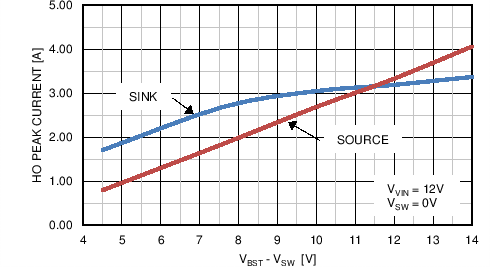
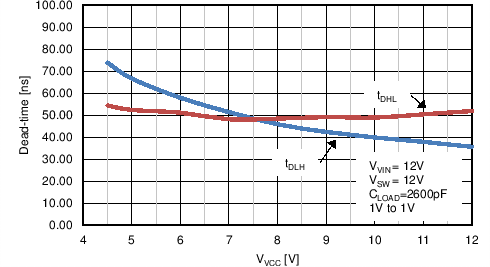
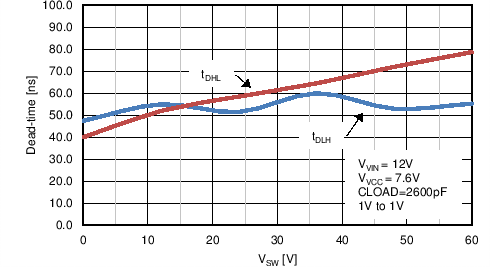
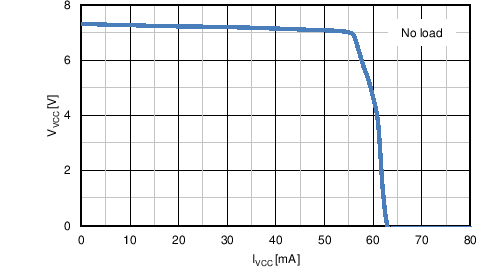
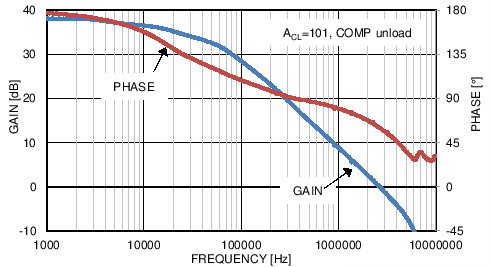
vs Frequency
